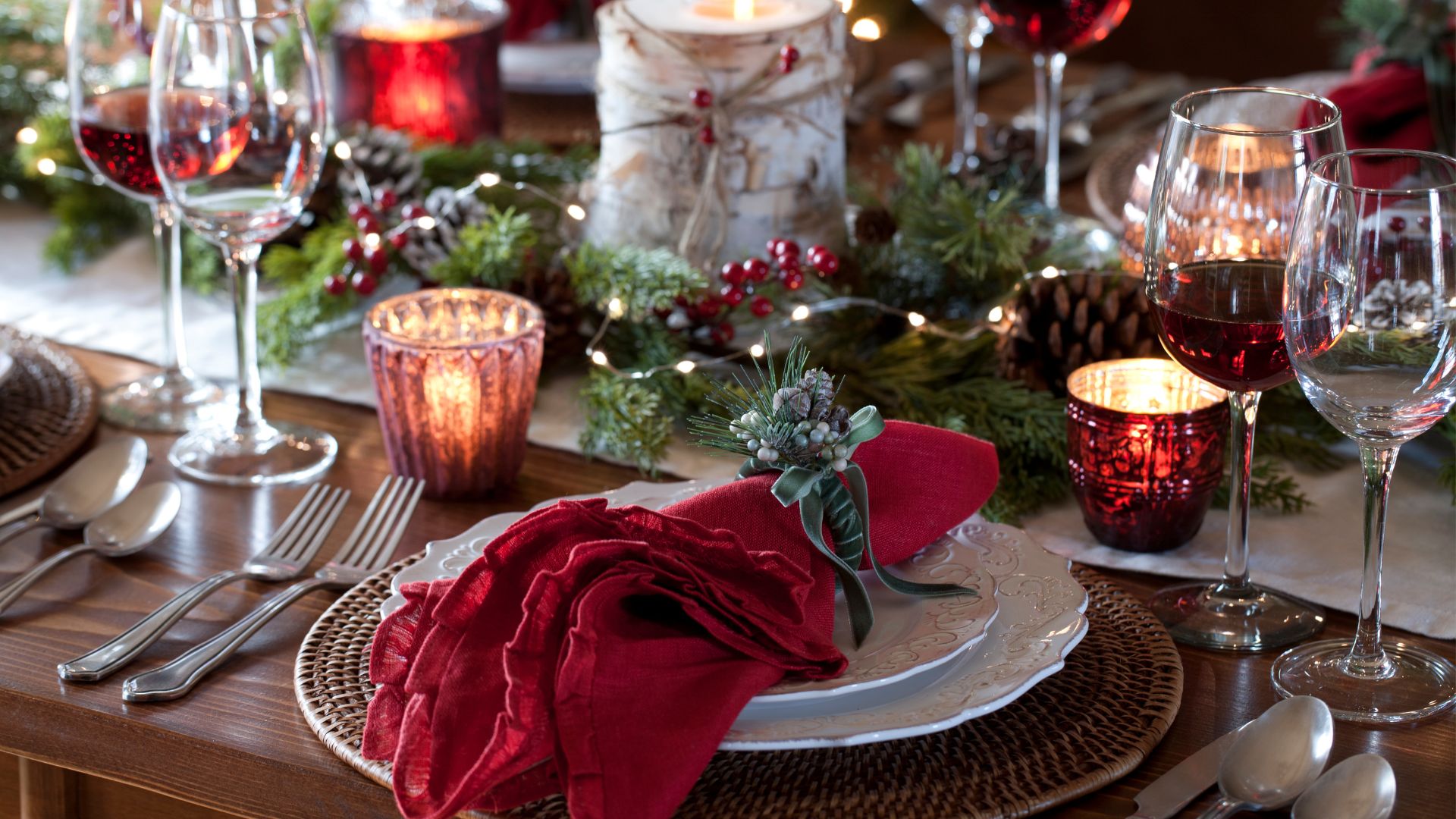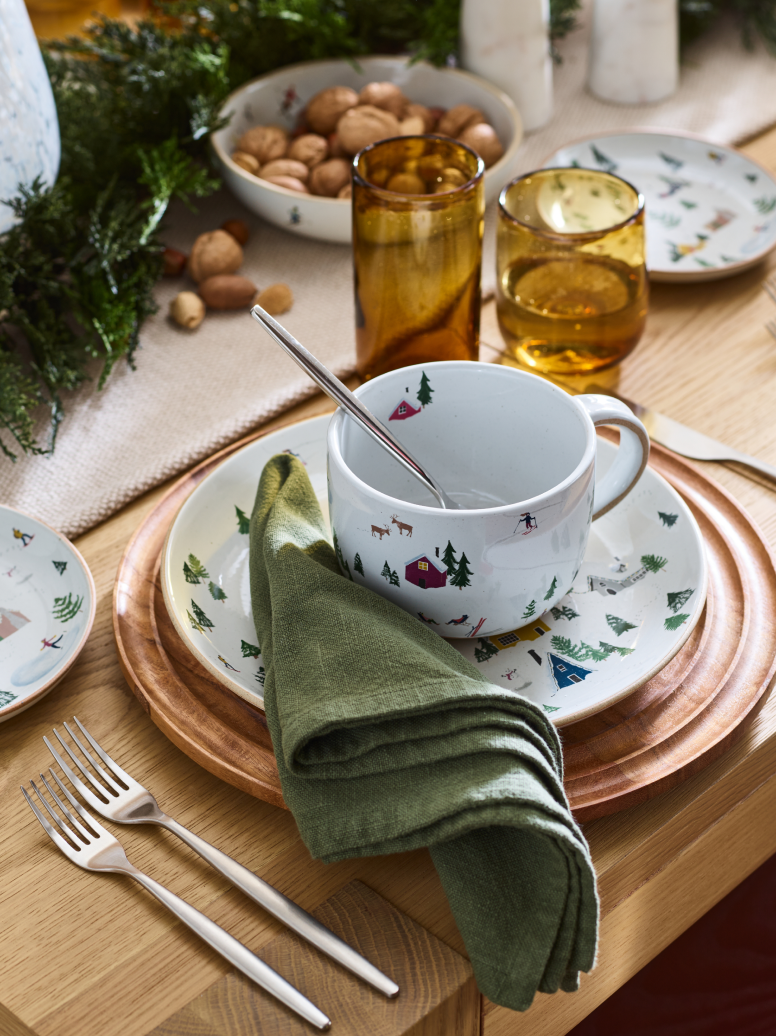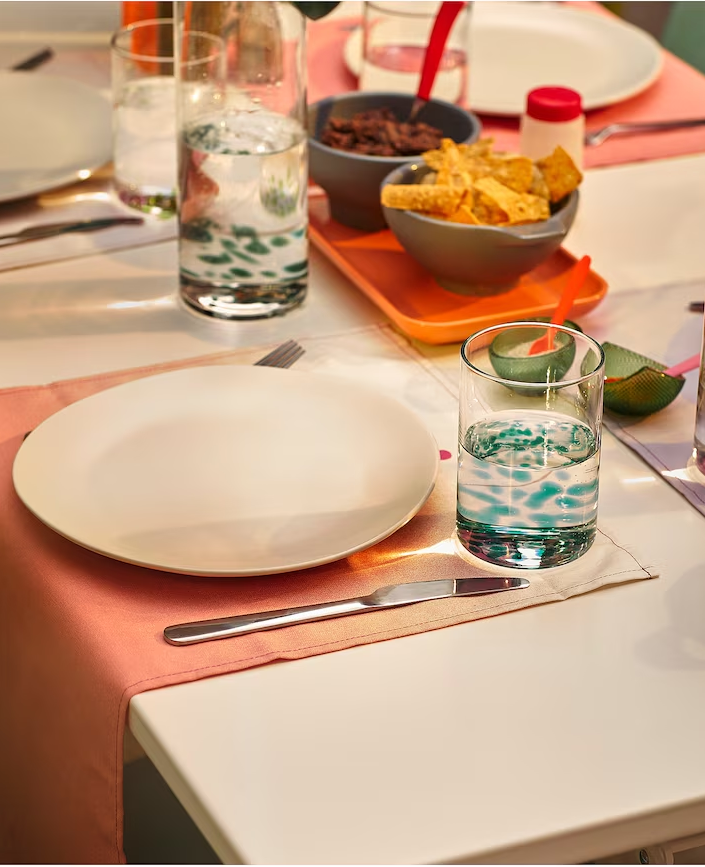
There is no better time to improve your hosting skills, impress guests, and bring that added shine to the dining table than now. Learning how to clean your silverware is a great skill to have, especially if pleasing guests is a priority. Water-stained and dull cutlery can be quite sore to look at, which is why going the extra mile to make your table and all that it holds look amazing — is a must.
From learning how to polish silverware to understanding its cleaning needs, there are a few things you'll want to do before family and friends arrive for the holidays. After all, you'll want your finest sets on the dining table that are set to impress.
Professional cleaners share their secrets on how you should clean silverware and what tools you need to get the job done. Here is everything you need to know to make your table setting gleam with cleanliness.
What You'll Need
According to Muffetta Krueger, owner of Muffetta's Housekeeping, all you need to have show-stopping flatware sets are the items below (many of which you will likely already have in your home):
- A microfiber cloth — The MR.SIGA microfiber cleaning cloths from Walmart
- Baking soda. This is available in many stores inexpensively, such as the Good & Gather baking soda from Target.
- White vinegar — Great Value distilled white vinegar 64 fl bottle from Walmart.
- Aluminum foil — With over 5800 reviews, the basic standard aluminum foil from Target in an 85 sq ft roll is a good choice.
- Mild dish soap — The seventh generation clean with purpose free & clear liquid dish soap from Walmart is plant-derived, containing no dyes or fragrances.
- A non-abrasive sponge— you can find soft sponges like the scotch-brite zero scratch scrub sponges and natural non-scratch scrubber sponge 3 pack from Target.
- Gloves — Using disposable gloves like the Great Value disposable vinyl gloves, 100 count from Walmart, ensures that no germs are being transferred to your cutlery. They also help you avoid creating fingerprints on the metal.
1. Prepare to Clean Your Silverware

Preparation is important for the success of many things in life, including well-maintained silverware for your dining table. Prior to cleaning your cutlery, which, if neglected, can lead to damage, consider a few important factors.
Muffetta says, "It's firstly important to determine whether your silverware is sterling silver, silver-plated, or stainless steel because different materials may require slightly varied methods of cleaning. You can usually find out the material of your cutlery if you're unaware by checking the pieces for stamps or markings."
After determining the type of silverware or flatware you're cleaning, gather all of your necessary tools on a spacious surface, such as an empty kitchen countertop. Ensure your washing basin or sink is clean before beginning to avoid transferring other forms of dirt onto your silverware. "I recommend wearing gloves as well while washing your silverware to help prevent leaving fingerprints or transferring oils to the silverware," says Muffetta.
2. Clean Silverware With Dish Soap

Now that you have everything prepared, you can begin cleaning your silverware before placing it in your fine dining room. Karina Toner, operations manager and professional cleaner at Spekless, recommends starting by soaking your silverware before cracking down on a cleaning routine. "Place your silverware into either soapy water or a solution of baking soda and water for 5 to 10 minutes. Soaking your silverware like this will help to loosen dirt and debris, making the cleaning process easier."
Soaking your silverware is an optional step, but it will work especially well if it contains stains or watermarks from past washing.
To provide your silverware with a safe initial cleaning, follow these steps: "Fill a bowl with warm water and add a few drops of mild dish soap," says Muffetta. "Then, gently scrub the silverware with a non-abrasive sponge before finally rinsing everything thoroughly to remove suds and drying with a microfiber cloth to prevent rust." It's important to use mild dish soap for this to ensure no harsh chemicals can damage your silverware.
3. Deep Clean Your Cutlery With White Vinegar

If your cutlery still looks a bit ragged, you can give it a deep clean with a few simple household ingredients. This will surely set your party apart the next time you host.
Muffetta shares, "To deep clean your silverware, mix half a cup of white vinegar with two tablespoons of baking soda in a large bowl. Then, submerge your silverware in the mixture and let it soak for 5 to 10 minutes."
Once this time has passed, you can rinse the silverware off and dry each piece thoroughly with a microfiber cloth. This step may also help tackle stubborn tarnishing, though it's best to target tarnished silverware separately with a different cleaning solution.
4. Remove Tarnishing With Aluminum Foil and Baking Soda

The tarnish on your dinnerware sets can be removed in a number of ways, and the experts we contacted shared four different ones you could try. Karina says, "Using a solution of hot water, aluminum foil, and baking soda causes a chemical reaction that removes tarnish."
To carry out this nifty hack, line a container that's safe to put hot water in with aluminum foil (shiny side up). Then, add a couple of tablespoons of baking soda to the water. If you wrap up each piece of your silverware in aluminum foil too (shiny side facing your cutlery, dull side facing outward) and place these in the water for up to half an hour, the sulfur in the tarnish on your cutlery will react with the aluminum foil and lift off.
Muffetta shared three other more hands-on, environmentally-friendly methods to remove the tarnish from your silverware: "For environmentally conscious readers, try these natural solutions:
- Lemon Juice and Salt: Use a mixture of these two ingredients to scrub tarnish away gently. Lemon isn't only great at refreshing sinks and making your space smell amazing; it can clean all sorts of things, including silverware.
- Cornstarch Paste: Apply a paste made from cornstarch and water to your silverware tarnished areas, then wipe them clean with a soft cloth.
- Banana Peel: The natural oils in a banana peel can help remove tarnish when rubbed on silverware."
"An added pro tip," Karina adds. "Always store silverware in a dry, airtight container or use anti-tarnish strips to prolong its pristine condition."
The 30 piece anti tarnish strips, also from Amazon, are the ideal shape to lay your pieces of silverware onto, and they can be freely cut to fit the size of the base of your air tight container.
FAQs
How often should I clean my silverware?
Muffetta Krueger, owner of Muffetta's Housekeeping, says, "Silverware should be cleaned after each use to prevent food particles from causing discoloration or tarnish. For pieces used infrequently, a monthly cleaning routine is sufficient to maintain their shine."
She continues: "Regularly cleaning and maintaining silverware not only enhances its appearance but also ensures its longevity. With simple DIY methods and proper care, you can keep your silverware sparkling for years to come."
What not to do when cleaning silverware? First and foremost: if you want it to continue to gleam and not tarnish, do not dishwash it. If you want to avoid scratching silverware, do not use anything abrasive on it, whether cleaning solutions or cloths; also don't chuck it into a stainless steel sink with other similarly tough metals — whether the sink itself (which should be lined with a dishcloth) or cups or utensils. And don't let it drip dry to avoid watermarks.







